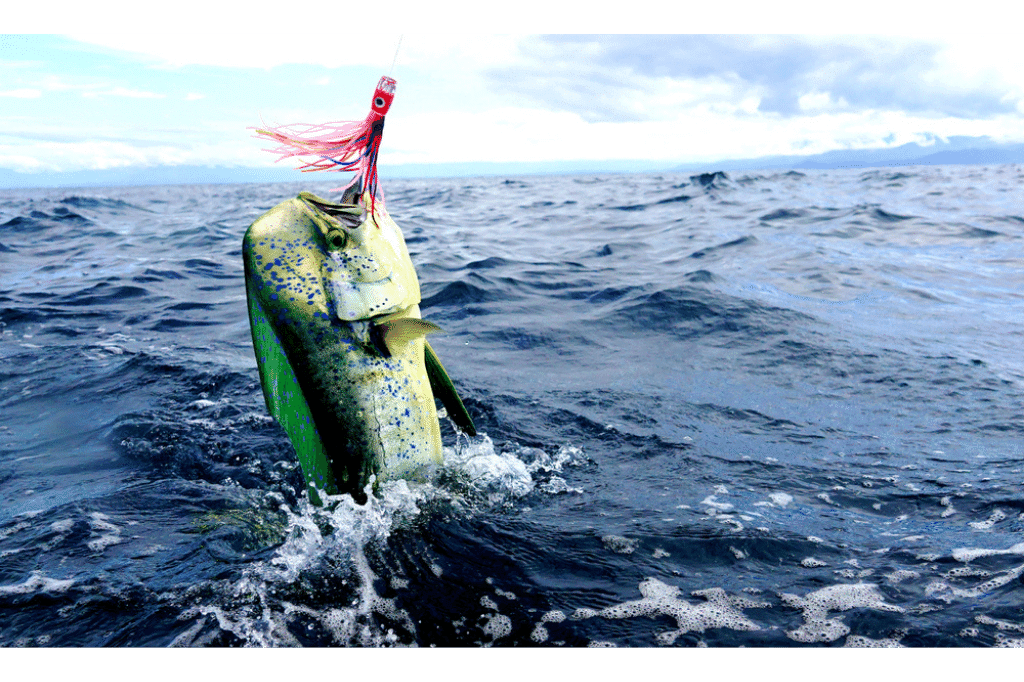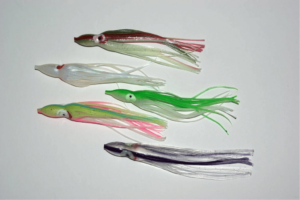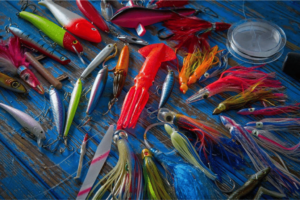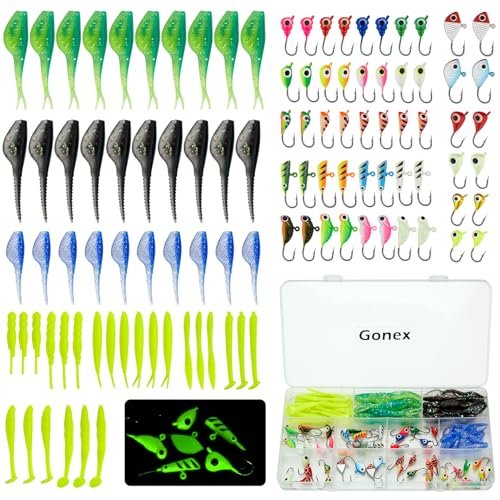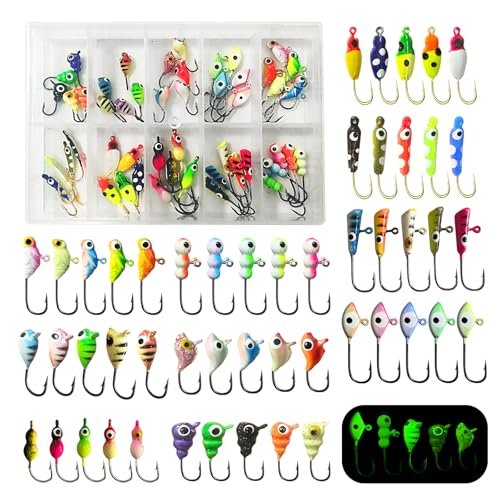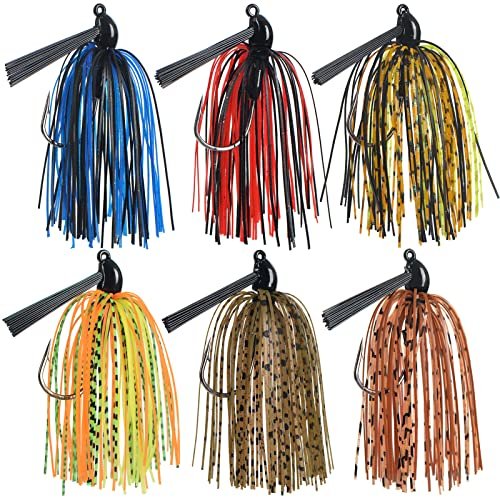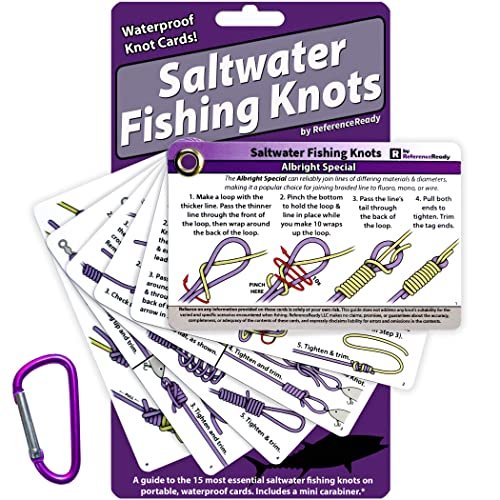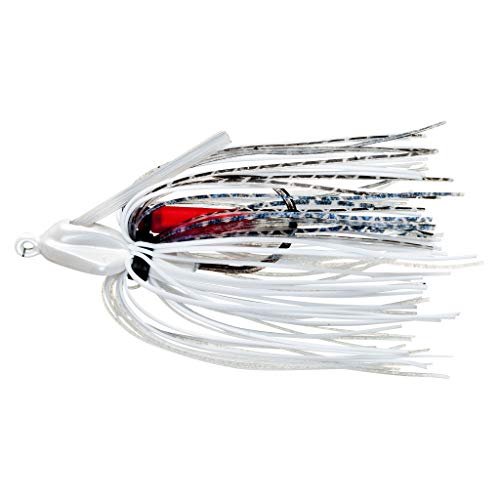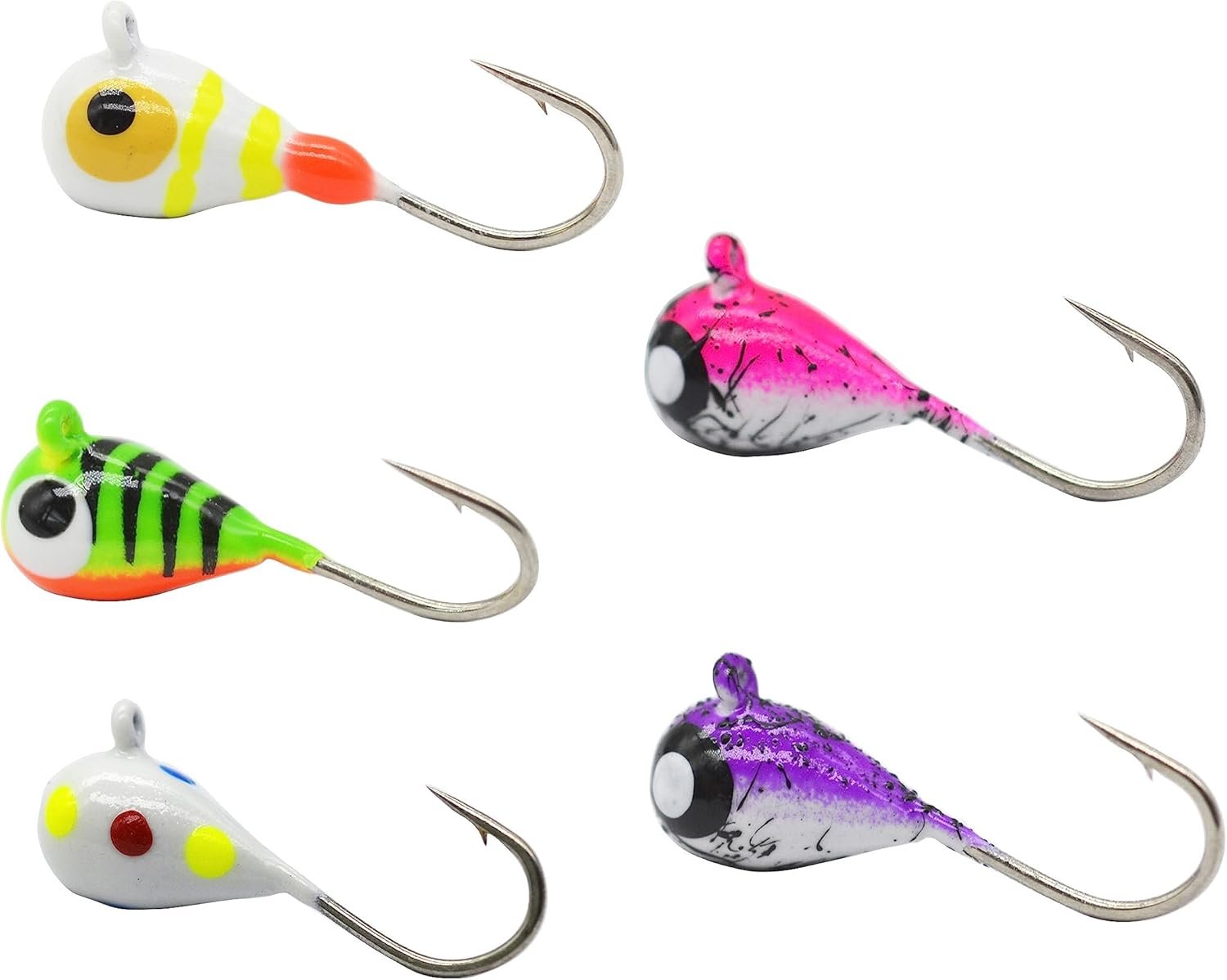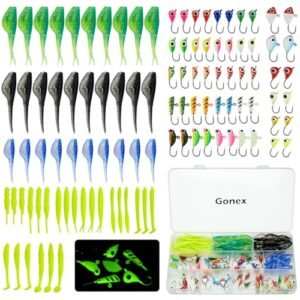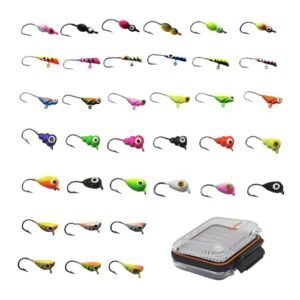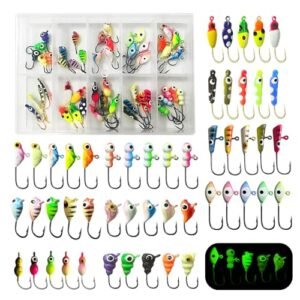Trolling lures come in various shapes, sizes, and colours to target different fish species. These lures are ideal for covering large areas of water quickly, increasing the chances of a catch. Anglers often use them in both freshwater and saltwater environments.
The key to successful trolling is selecting the right lure and adjusting the trolling speed. Proper setup and technique can significantly improve fishing results. Trolling lures offer versatility and efficiency, making them a favourite among many fishing enthusiasts. Understanding their use can enhance your fishing experience and lead to more fruitful outings.
The Art Of Trolling Lures
Fishing with trolling lures is a skilful art. It involves dragging lures behind a moving boat. This technique attracts fish from various depths and distances. Knowing the right gear and choosing the correct lure for each species are crucial. Let’s dive into the details.
Choosing The Right Gear
Having the right gear ensures a successful trolling experience. Start with a durable rod and reel. These should be capable of handling heavy lures and strong fish.
- Rod: opt for a medium-heavy to heavy action rod.
- Reel: Use a reel with a good drag system and enough line capacity.
- Line: Choose a braided or monofilament line for strength and flexibility.
- Downriggers: These help in placing lures at specific depths.
Make sure to include essential accessories. These include swivels, weights, and leaders. They help in effective lure presentation and prevent line twists.
Lure Selection By Species
Choosing the right lure depends on the fish species you target. Each species has unique preferences and behaviours.
| Species | Preferred Lures |
|---|---|
| Salmon | Flashers, spoons, and hoochies |
| Trout | Spinners, spoons, and soft plastics |
| Bass | Crankbaits, spinnerbaits, and jigs |
| Walleye | Crankbaits, crawler harnesses, and jigs |
Understanding the feeding habits of fish helps in lure selection. For example, salmon are attracted to flashy and colourful lures. Trout prefer natural-looking baits. Bass are drawn to vibrating and noisy lures. Walleye go for slow-moving and realistic baits.
Lure Types And Their Actions
Understanding the different types of trolling lures and their actions can significantly enhance your fishing success. Each lure type has unique characteristics that attract specific fish species. Let’s delve into the primary types of trolling lures and their distinctive actions.
Diving Plugs
Diving plugs are incredibly effective for reaching fish swimming at various depths. These lures have a lip or bill that determines their diving depth. Shorter lips dive shallow, while longer lips reach deeper waters.
Diving plugs often mimic the movements of injured fish, making them irresistible to predators. They come in various sizes and colours, catering to different fishing conditions and target species.
| Lip Size | Diving Depth | Common Targets |
|---|---|---|
| Short | 1-3 feet | Trout, Bass |
| Medium | 3-10 feet | Walleye, Pike |
| Long | 10-20+ feet | Salmon, Deep-water species |
Surface Lures
Surface lures create splashes and noise on the water’s surface, attracting fish from below. They are perfect for topwater fishing, especially during early morning or late evening hours when fish are more likely to surface.
Common types of surface lures include poppers, buzz baits, and walking baits. Each has a unique action that can trigger explosive strikes from aggressive fish.
- Poppers: Create a popping sound that mimics distressed prey.
- Buzz baits: Generate a buzzing noise and vibration.
- Walking Baits: Move side-to-side, mimicking a fleeing baitfish.
Soft Plastic Baits
Soft plastic baits are versatile and lifelike, making them a favourite among anglers. They come in various shapes and sizes, such as worms, grubs, and shad.
The flexibility of soft plastics allows for a wide range of actions, from subtle twitches to vigorous jerks. This versatility makes them suitable for many fishing scenarios.
- Worms: Effective for slow, methodical retrieves.
- Grubs: Great for jigging and bottom-bouncing techniques.
- Shad: Mimic baitfish and work well in various water columns.
Colour Theory In Lure Selection
Understanding colour theory in lure selection can make a significant difference in your fishing success. Fish are attracted to specific colours based on various factors such as water conditions, light penetration, and their own vision capabilities. By choosing the right colours, you can increase your chances of catching more fish.
Visibility And Attraction
Visibility is crucial in lure selection. Different colours have varying levels of visibility in different water conditions.
Clear water: In clear water, natural colours like silver, white, and transparent shades work best. These colours mimic the appearance of baitfish.
Muddy water: In muddy or stained water, bright colours like chartreuse, orange, and red are more visible. They stand out and catch the fish’s attention.
Deep water: In deep water, colours like blue, purple, and black are more effective. These colours maintain their visibility even at greater depths.
| Water Condition | Best Colours |
|---|---|
| Clear | Silver, White, Transparent |
| Muddy | Chartreuse, Orange, Red |
| Deep | Blue, Purple, Black |
Colour Preferences By Species
Different fish species have different colour preferences. Knowing these can help you choose the right lure color.
Trout: Trout are attracted to natural colours like brown, green, and black. They prefer lures that mimic insects and small fish.
Bass: Bass are often drawn to bright and flashy colours like chartreuse, red, and blue. They are aggressive feeders and respond well to vibrant lures.
Salmon: Salmon prefer colours like pink, orange, and red. These colours are highly visible in both fresh and saltwater conditions.
- Trout: Brown, Green, Black
- Bass: Chartreuse, Red, Blue
- Salmon: Pink, Orange, Red
By understanding the colour preferences of different fish species and the visibility of colours in various water conditions, you can make more informed decisions when selecting trolling lures. This can lead to a more successful and enjoyable fishing experience.

Size Matters: Matching The Hatch
Fishing with trolling lures can be a game-changer. One crucial aspect is getting the lure size right. The phrase “matching the hatch” means matching the size of the lure to the local baitfish. This technique can lead to more bites and a successful fishing trip.
The Importance Of Lure Size
The size of your lure is crucial. Fish are more likely to bite when the lure mimics their natural prey. A lure that is too big or too small might be ignored.
Small lures can attract smaller fish and sometimes bigger fish too. Large lures are usually more effective for bigger fish. But, they might scare away smaller fish.
Matching Local Forage
Understanding what the fish are eating is key. Local forage refers to the small fish and other creatures that bigger fish prey on. Match your lure to these local prey species for better results.
Here is a simple table to help you choose the right lure size based on local forage:
| Local Forage | Recommended Lure Size |
|---|---|
| Small Minnows | 1-3 inches |
| Medium Shad | 3-5 inches |
| Large Baitfish | 5-7 inches |
Observe the water and see what the fish are eating. This will help you pick the right lure size. Fish tend to be more active and bite more when the lure matches their prey.
- Pay attention to the size of the baitfish.
- Adjust your lure size accordingly.
- Experiment with different sizes to see what works best.
Smaller lures can sometimes work better in clear water. Larger lures might be more effective in murky water. Always be ready to change your lure size based on the conditions.
The Science Of Scent And Taste
Trolling lures are not just about colours and movements. The science of scent and taste plays a crucial role in attracting fish. Fish have an incredible sense of smell and taste, helping them detect food from a distance. By understanding this, anglers can improve their catch rates significantly.
Enhancing Lures With Scents
Enhancing lures with scents can make a huge difference. Scents mimic natural prey, drawing fish closer. Fish are more likely to bite a lure that smells like their food. Anglers can use various products to add scent to their lures. These products come in sprays, gels, and even bait-infused plastics.
Here are some benefits of using scents on lures:
- Increased attraction radius
- Longer fish retention on lures
- Masking human doors
| Type of Scent | Benefits |
|---|---|
| Sprays | Easy application, wide coverage |
| Gels | Long-lasting, strong scent |
| Bait-infused Plastics | Consistent release, natural feel |
Natural Vs. Artificial Baits
Choosing between natural and artificial baits depends on the target fish species. Natural baits like worms, minnows, and shrimp are effective because they look and smell like real food. Fish find them irresistible. Artificial baits, on the other hand, can last longer and come in various shapes and sizes.
Advantages of natural baits:
- Authentic scent and taste
- High acceptance rate by fish
- Readily available in nature
Advantages of artificial baits:
- Durability and reusability
- Customizable shapes and sizes
- Consistent performance
Understanding the science of scent and taste can transform your fishing experience. Using the right scents and baits can make all the difference.
Tuning Your Lures For Success
Want to catch more fish? Tuning your lures is the key. Properly tuned lures can attract fish better and improve your fishing results. Let’s explore how to fine-tune your trolling lures for maximum success.
Adjusting Lure Action
Adjusting lure action is crucial for making your lure move realistically. Fish are attracted to lures that mimic their prey. Here are steps to adjust your lure’s action:
- Inspect the lure for any damage or imperfections.
- Bend the eyelet slightly to change the direction of movement.
- Test the lure in water to see the changes.
- Repeat adjustments until you get the desired action.
Proper adjustments ensure that your lure moves in a lifelike manner, attracting more fish.
Troubleshooting Common Issues
Sometimes, lures don’t perform as expected. Here are some common issues and solutions:
| Issue | Solution |
|---|---|
| Lure spins or twists | Check the rigging and adjust the eyelet to balance the lure. |
| Lure dives too deep | Shorten the line or add a float to control depth. |
| Lure doesn’t attract fish | Change the colour or size of the lure for better attraction. |
By troubleshooting these common issues, you can ensure your lures perform their best and catch more fish.
Secrets Of Speed And Depth
Trolling lures can be incredibly effective if you understand the secrets of speed and depth. Knowing how to control these two factors can significantly increase your chances of a successful catch. This section will delve into the optimal trolling speeds and depth control techniques that can make your fishing experience more fruitful.
Optimal Trolling Speeds
The speed at which you troll your lure is crucial. Different species of fish react to different speeds. Here’s a quick guide:
- Salmon: 2.5 to 3.5 mph
- Tuna: 5 to 8 mph
- Walleye: 1 to 2 mph
- Marlin: 6 to 9 mph
Always keep a close watch on your speedometer. Small adjustments can make a big difference. If you’re not getting bites, try varying your speed by half a mile per hour.
Depth Control Techniques
Controlling the depth of your lure is equally important. Fish often stay at specific depths depending on the time of day and water temperature. Here are some techniques:
- Downriggers: These devices allow you to set your lure at a specific depth. They are very precise and effective.
- Lead Core Line: This type of fishing line has lead built into it. It helps your lure sink to the desired depth.
- Diving Planers: These are small devices attached to your line. They help to pull the lure down to a certain depth.
Using a fish finder can help you determine the exact depth where fish are swimming. Adjust your lures accordingly to maximize your catch.
Here’s a simple table to help you decide which technique to use:
| Technique | Best For |
|---|---|
| Downriggers | Deep Water |
| Lead Core Line | Medium to Deep Water |
| Diving Planers | Shallow to Medium Water |
Mastering the secrets of speed and depth will make your trolling more successful. Experiment with different speeds and depths to see what works best for your target species.
Seasonal Strategies For Trolling
Trolling lures can be very effective, but their success often depends on the season. Each season brings different water temperatures, fish behaviours, and feeding patterns. Understanding these changes helps in selecting the right trolling strategy.
Spring Patterns
Spring is a time of renewal, and fish start to become more active. They move closer to shorelines and shallow waters. During spring, use brightly coloured lures. These attract fish that are hungry after the winter months.
Consider using the following lures:
- Crankbaits: Mimic small fish that are common in spring.
- Spinnerbaits: Their flash and vibration make them ideal for murky waters.
- Jerk baits: Excellent for targeting bass and pike.
Summer Hotspots
In summer, fish tend to move to deeper waters to stay cool. Trolling at different depths can help locate fish. Use lures that can dive deep.
Here are some great summer lures:
- Deep-diving crankbaits: Reach fish that are hiding in deeper waters.
- Spoons: Their wobbling action is attractive to many species.
- Swimbaits: Imitate the larger prey fish that are common in summer.
Fall Transitions
Fall is a time of transition, and fish begin to feed aggressively to prepare for winter. Fish move back to shallower waters and are more willing to chase lures.
Ideal lures for fall include:
- Lipless crankbaits: Create a lot of noise, attracting fish from a distance.
- Top water lures: Effective during early mornings and late evenings.
- Soft plastics: Mimic the prey fish that are abundant in fall.
Winter Tactics
Winter fishing can be challenging, as fish become sluggish. They often stay in deeper waters where it’s warmer. Slow down your trolling speed and use smaller lures.
Top winter lures include:
- Jigs: Work well in cold, deep waters.
- Blade baits: Their vibration can entice inactive fish.
- Ice jigs: Perfect for ice fishing and slow trolling.
Advanced Rigging Techniques
Mastering advanced rigging techniques can dramatically improve your trolling success. These methods help you cover more water and present lures at various depths. Whether you are using downriggers and planer boards or daisy chains and spreader bars, understanding these techniques will elevate your fishing game.
Downriggers And Planer Boards
Downriggers allow you to fish at precise depths. They use a weighted ball to take your lure deep. This is ideal for targeting fish that stay below the surface.
To rig a downrigger, follow these steps:
- Attach the weight to the downrigger cable.
- Clip your line to the release mechanism.
- Lower the weight to your desired depth.
Planer boards spread your lines out to the sides. This helps you cover a wider area. They are especially useful in shallow water.
Here’s how to set up a planer board:
- Attach your line to the planer board clip.
- Release the planer board into the water.
- Let out enough line to get the board away from the boat.
Daisy Chains And Spreader Bars
Daisy chains are a series of lures or baits connected by a single line. They mimic a school of fish, attracting predators. This technique is effective for species like tuna and marlin.
To rig a daisy chain:
- Connect multiple lures using short leaders.
- Attach the chain to your main fishing line.
- Deploy the chain behind the boat.
Spreader bars are similar but use a bar to spread out the lures. This creates a larger, more enticing target.
To set up a spreader bar:
- Attach your lures to the spreader bar arms.
- Connect the bar to your main line.
- Deploy the bar and monitor its action.
Using these techniques will help you catch more fish and enjoy your time on the water.
Weather And Water Conditions
Fishing with trolling lures can be a game-changer, but understanding weather and water conditions is crucial. Different conditions affect the behaviour of fish. Knowing how to read these conditions can significantly improve your fishing success.
Reading Weather Patterns
Weather plays a significant role in trolling lure effectiveness. Fish respond differently to various weather conditions. On sunny days, fish may stay deeper to avoid light. In contrast, cloudy days often bring fish closer to the surface. Windy conditions can stir up the water, making fish more active. A storm approaching can trigger feeding frenzies. Always check the weather forecast before heading out.
| Weather Condition | Fish Behaviour |
|---|---|
| Sunny | Fish stay deeper |
| Cloudy | Fish move to surface |
| Windy | Fish become more active |
| Storm Approaching | Trigger feeding frenzies |
Effect Of Water Clarity And Temperature
Water clarity affects the visibility of your lures. In clear water, fish can see lures from a distance. Use natural colours to mimic their prey. In murky water, fish rely more on vibrations and scent. Use bright or dark colours to catch their attention.
- Clear Water: Use natural colours
- Murky Water: Use bright or dark colours
Water temperature also influences fish behaviour. Fish are cold-blooded, so their activity changes with water temperature. In warm water, fish are more active and feed aggressively. In cold water, fish become sluggish and feed less. Adjust your trolling speed based on water temperature.
- Warm Water: Increase trolling speed
- Cold Water: Decrease trolling speed
Pro Tips For Bigger Catches
Every angler dreams of landing that trophy fish. Using trolling lures effectively can make this dream a reality. Follow these pro tips to enhance your fishing success.
Expert Angler Insights
Expert anglers know the secrets to bigger catches. Here are some of their top tips:
- Use the right lure: Match the lure size and colour to the fish species.
- Adjust lure depth: Use weights or downriggers to reach the right depth.
- Vary your speed: Different fish react to different trolling speeds.
- Check local reports: Stay updated on where fish are biting.
Fine-tuning Your Approach
Fine-tuning your trolling technique can lead to more and bigger catches. Here’s how to optimize your approach:
- Monitor water temperature: Fish are more active in certain temperatures.
- Use a fish finder: Locate fish and structure with this tool.
- Experiment with lure colours: Sometimes, a small colour change makes a big difference.
- Change lure action: Vary the retrieve to mimic injured prey.
| Tip | Details |
|---|---|
| Right Lure | Match size and colour to target fish. |
| Adjust Depth | Use weights or downriggers. |
| Vary Speed | Test different trolling speeds. |
| Local Reports | Stay updated on fish activity. |
| Water Temperature | Fish are more active in certain temperatures. |
| Fish Finder | Locate fish and structure. |
| Experiment Colours | Small colour changes can help. |
| Change Action | Vary the retrieve to mimic prey. |
Conservation And Ethical Angling
Anglers play a crucial role in preserving our aquatic ecosystems. Responsible fishing practices ensure the future of our water bodies and fish populations. Using trolling lures effectively while maintaining ethical standards is vital. This section covers best practices for catch and release and sustainable fishing techniques.
Catch And Release Best Practices
Catch and release is a popular method among ethical anglers. It helps maintain fish populations. Follow these steps to ensure a healthy release:
- Use barbless hooks to minimize injury.
- Handle fish with wet hands or gloves to protect their slime coat.
- Avoid keeping fish out of water for more than 30 seconds.
- Use a rubberized net to support the fish gently.
- Revive the fish by holding it in the water until it swims away.
These practices ensure fish survival and contribute to a healthy ecosystem. Ethical angling respects the life of each fish.
Sustainable Fishing Techniques
Sustainable fishing supports long-term fish populations and aquatic health. Here are some techniques to consider:
- Follow local fishing regulations to avoid overfishing.
- Use selective gear to target specific species and sizes.
- Practice seasonal fishing to avoid breeding periods.
- Limit your catch to what you need, releasing the rest.
- Participate in habitat conservation efforts to restore fish environments.
Sustainable techniques ensure we enjoy fishing for generations. Ethical anglers strive for balance in nature.
Together, catch and release best practices and sustainable techniques form the backbone of conservation and ethical angling. Every angler can make a difference.
Frequently Asked Questions
What Lures To Use For Trolling?
Use spoons, crankbaits, and soft plastics for trolling. Match lure size to target fish. Vary colours based on water clarity.
What Is The Difference Between Casting And Trolling Lures?
Casting lures are thrown and retrieved by hand. Trolling lures are dragged behind a moving boat. Both target different fish behaviours.
What Are The Slow Trolling Lures?
Slow trolling lures include soft plastics, spoons, and live baits. Popular choices are squid, minnows, and small jigs. These attract fish like trout, walleye, and salmon effectively.
How Far Behind The Boat Should I Troll?
Troll the lure 20-150 feet behind the boat. Adjust distance based on water clarity, speed, and fish species.
Conclusion
Mastering trolling lures can significantly improve your fishing success. Choose the right lure for your target species. Experiment with different types and colours to find what works best. Stay patient and persistent, and you’ll see results. Happy fishing and tight lines!

